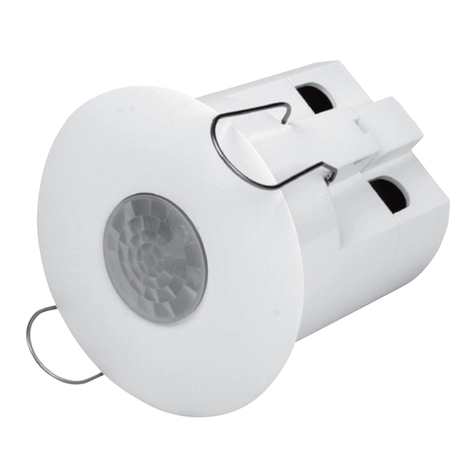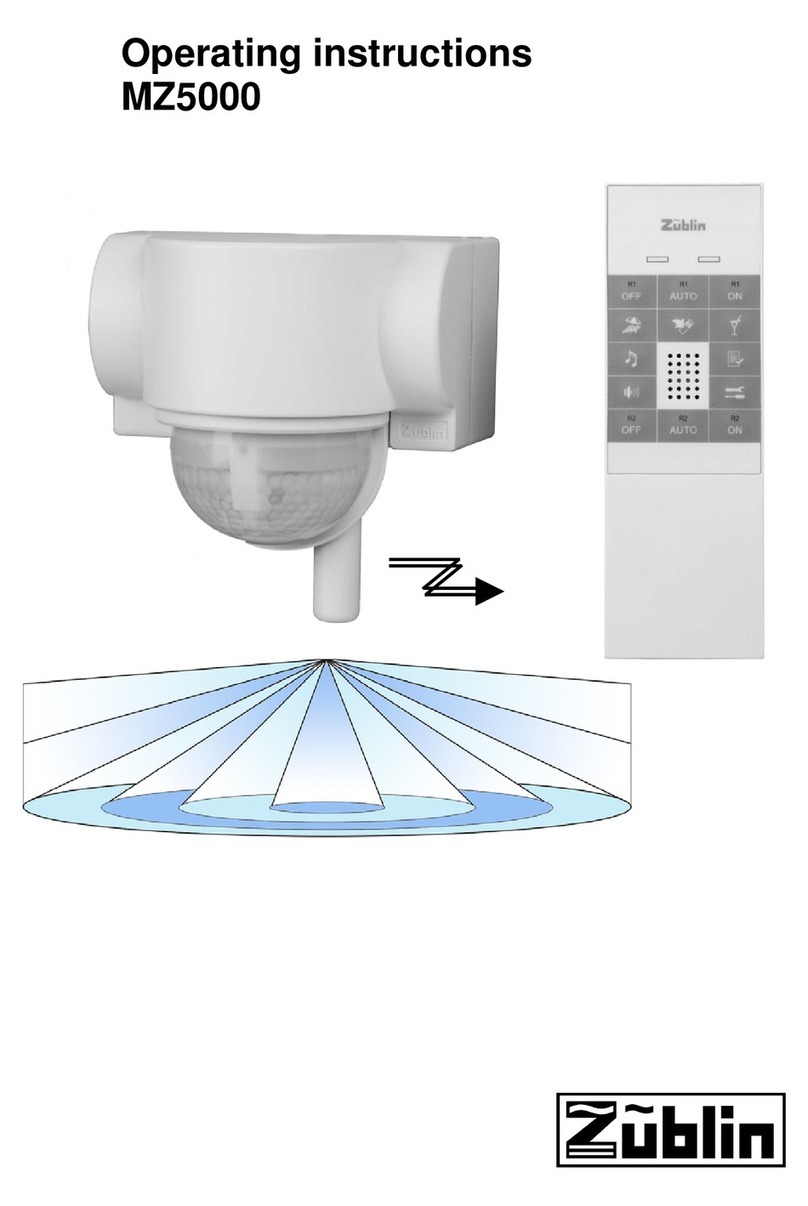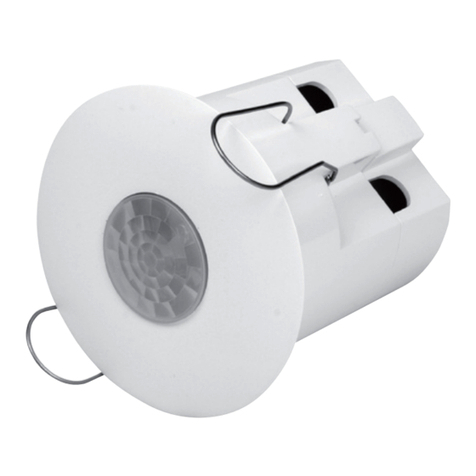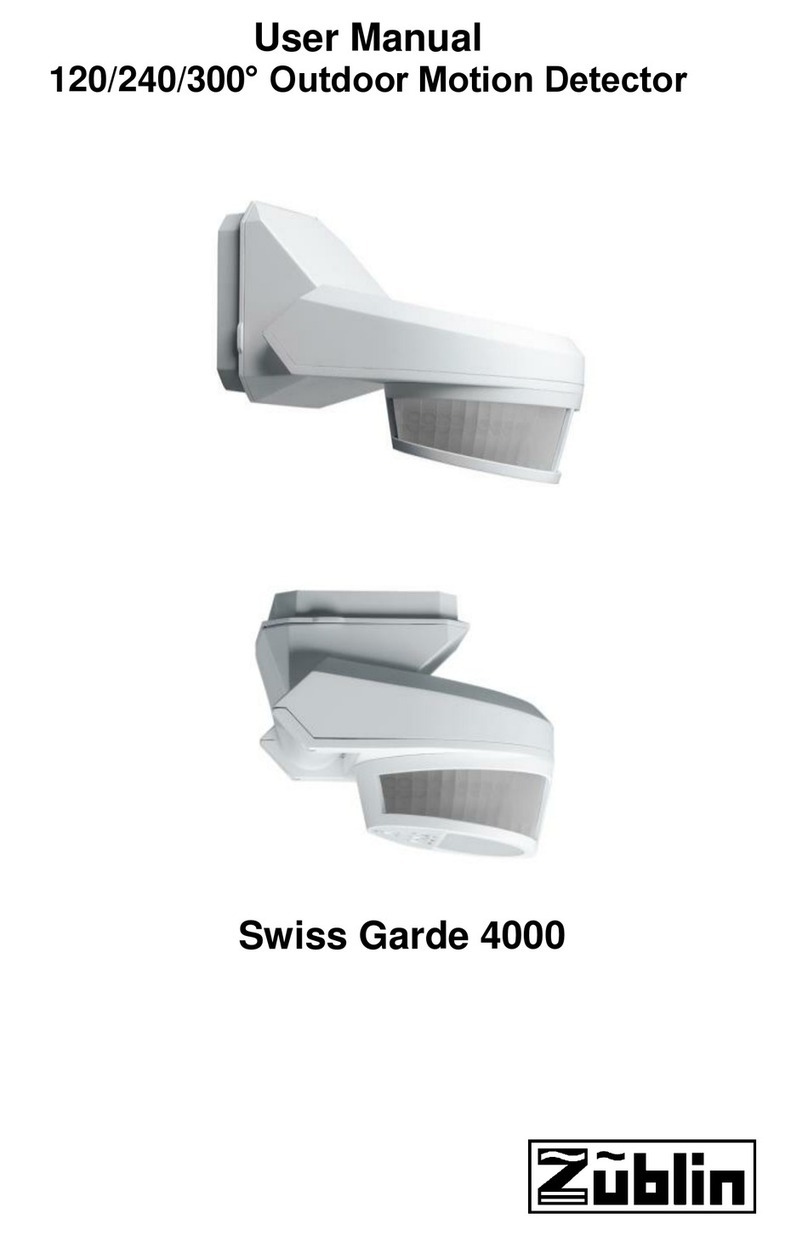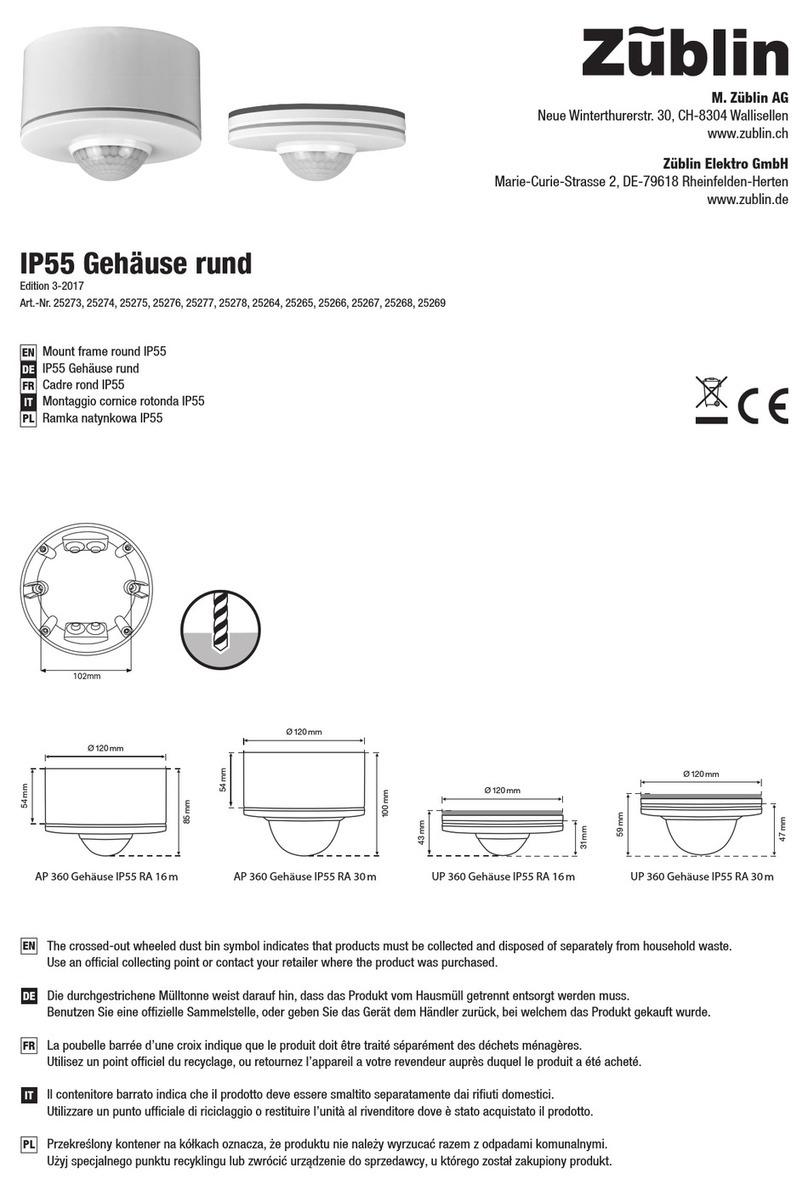– 9 –
Initial operation
• After being switched on, the initialisation process of approx. 30 s is started.
• During the initialisation phase, the red LED is lit up and the connected light is switched
on. The light and the LED are then switched off again.
Depending on the program selected by the IR dimming remote control or the settings
on the controllers, the detector now selects auto/test or short pulse mode.
• During the warm-up phase all of the commands from the IR remote control are ig-
nored!
LED activities following the warm-up phase
• In test/short pulse or auto mode, the red LED lights up for 250 ms every time a detec-
tion is made regardless of the set lux value.
• The red LED lights up for 5 s to indicate that the ambient brightness is still below the
preset lux value (twilight value).
• If the detector is programmed using the IR remote control, the red LED light flashes
twice to acknowledge receipt of the command.
If the light is switched on when a command is received from the IR remote control, it
is initially switched off and the detector switches to programming mode.
Exclusion key: and
• Switch-on/off delay
A switch delay function is integrated into the detector to avoid unwanted switching
processes if the ambient brightness changes quickly.
• 10 s switch-on delay – When the ambient brightness changes from light to dark and
the preset lux value is achieved, the light is only switched on after 10 s.
• 5 min switch-off delay – When the ambient brightness changes from dark to light
and the preset lux value is achieved, the light is only switched off after 5 min.






